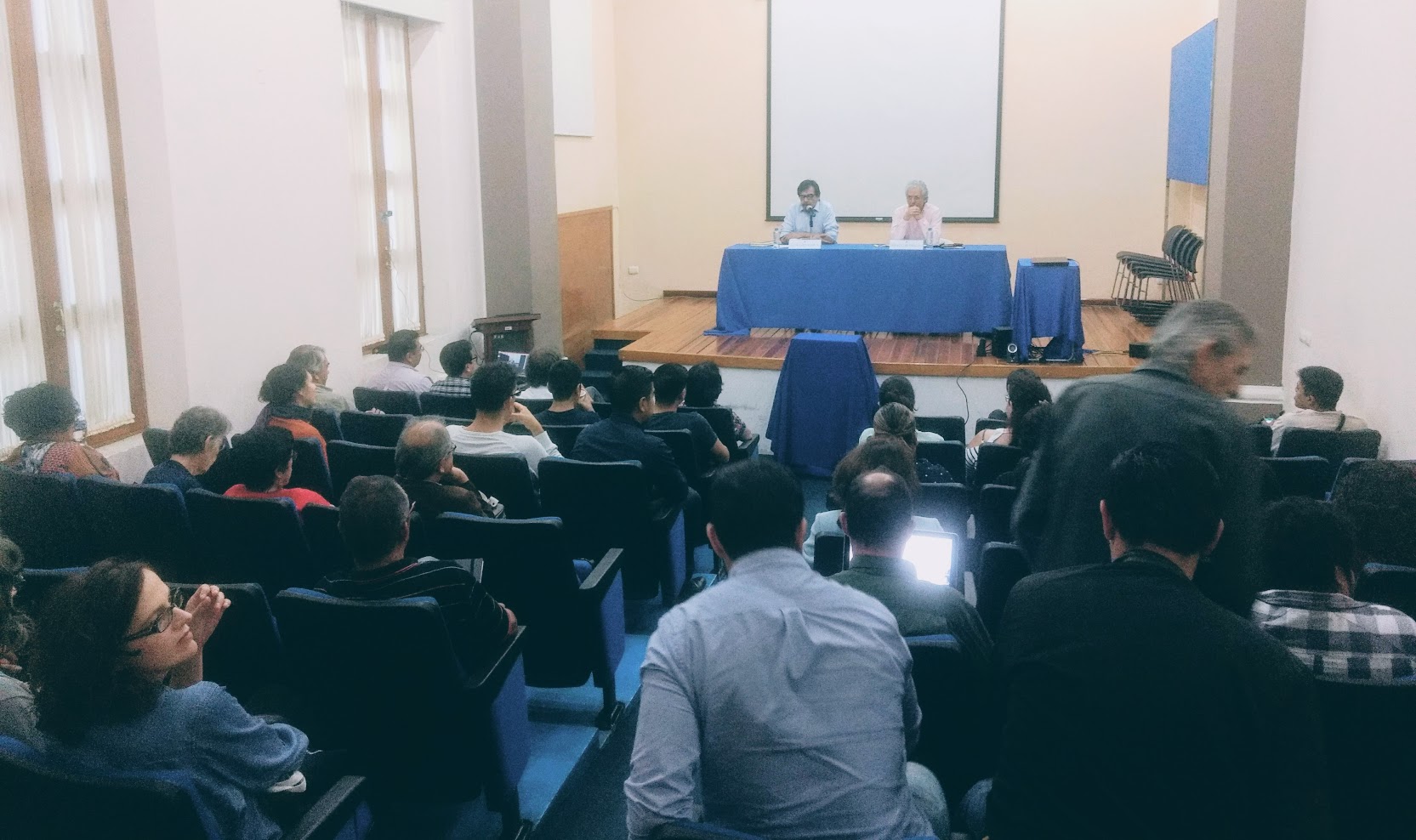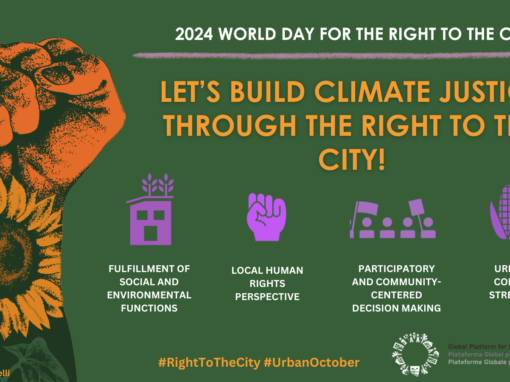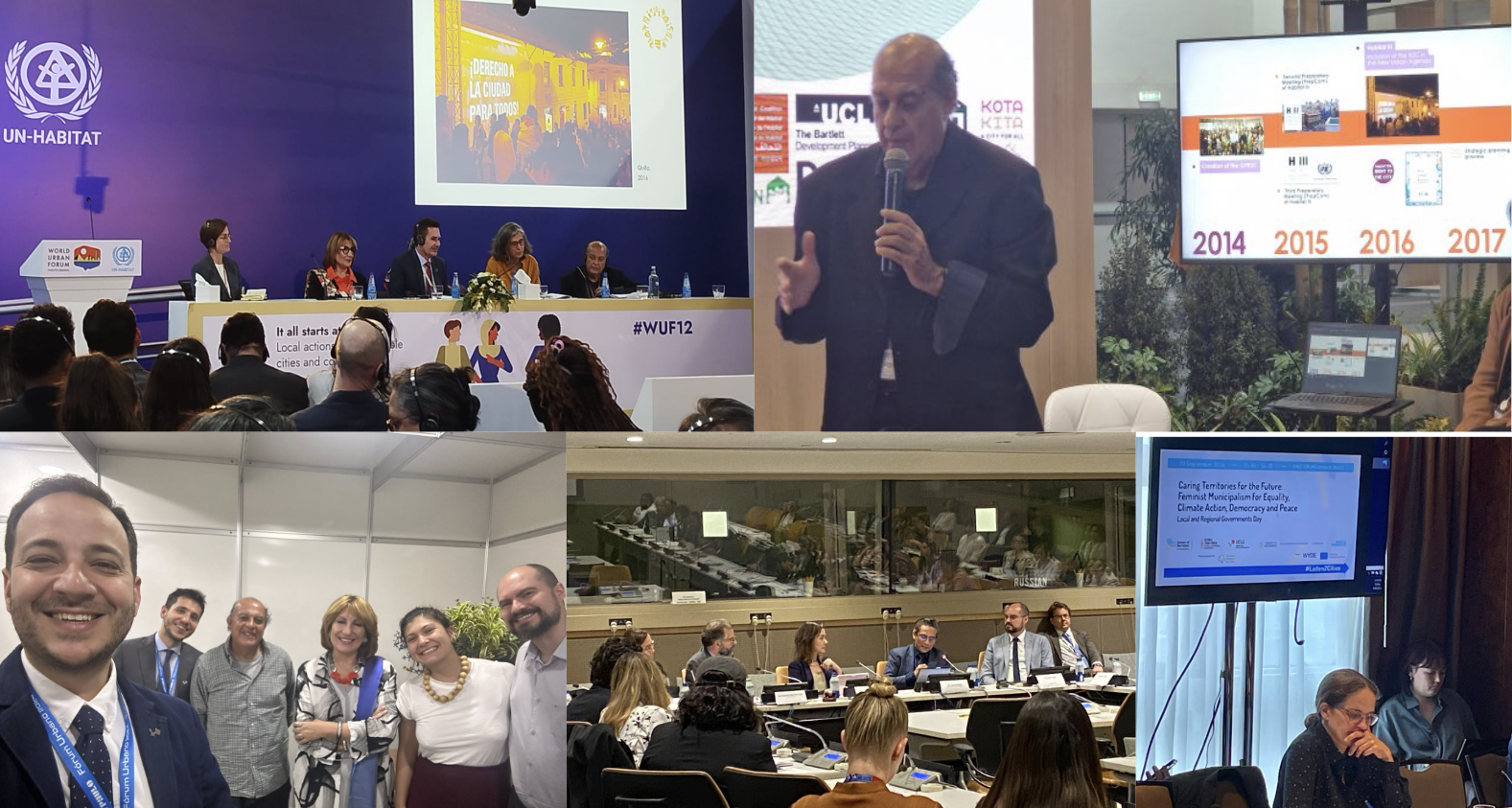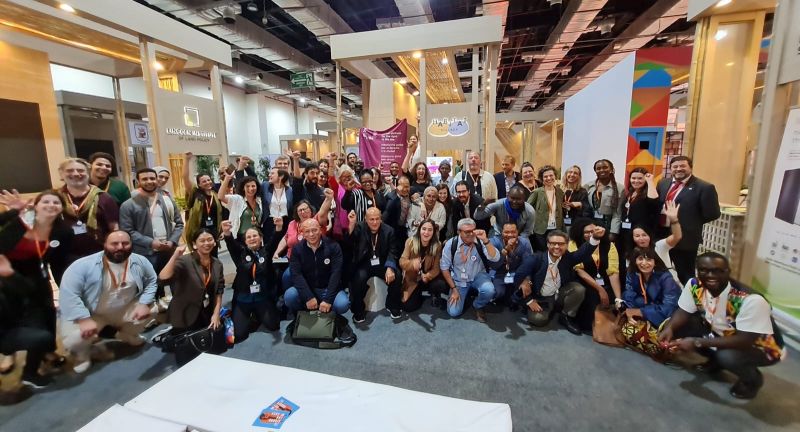 Luis Fernando Granados (organizer) and Hipólito Rodríguez (mayor of Xalapa)
Luis Fernando Granados (organizer) and Hipólito Rodríguez (mayor of Xalapa)
at the closing of the event
On August 28, 2018, in the city of Xalapa, Mexico, the colloquium entitled The Right to the City: Half a Century of a Revolutionary Idea was held. The initiative was coordinated by an academic group called Espacio, Territorio, Cultura (ETC), where researchers from diverse disciplines affiliated to the Instituto de Investigaciones Histórico-Sociales (IIH) of the Universidad Veracruzana come together. For the last couple of years they have been organizing debates around publications that have marked the 20th century and, for the first time, on the occasion of the 50th anniversary of the publication of Henri Levebvre’s book The Right to the City, they decided to hold a colloquium of greater importance.
In the first round of presentations, Malik Tahar began by placing Lefebvre on the political stage of the 1960s (the third-world, Situationism, Western Marxism), without neglecting his complex relationship with the French Communist Party or the ideas that animated the revolts of May 1968. From a more current reading, Rodrigo Díaz spoke of the disastrous consequences of automobile-based planning on everyday life in Latin American cities. Although his position fully converges with Lefebvre’s critique of planning, the Chilean asserted that Lefebvre’s concept of the right to the city is inoperable from the point of view of the urbanist, who requires ordinances for action. As a historian, Luis Fernando Granados, for his part, offered a re-reading of the colonial event in Latin America based on the distinction that Lefebvre operates between the medieval city and the capitalist city. Claudia Zamorano closed the panel by returning to the category of urban revolution to make the bridge with the most recent works of David Harvey.
The second panel focused on some works that make the Lefebvrian distinction between habitat and inhabiting. Dora Sánchez discussed the ideal vision of worker housing of the 1930s. Laura Elisa Valera focused on the process of patrimonialization of a popular colony in downtown Puebla. Finally, Rihan Yeh exposed the processes of marginalization and stigmatization suffered by the migrant populations that in their time came to populate the area of the sentry box that separates Mexico and the United States in Tijuana. Jerónimo Díaz, for his part, from his experience in HIC’s Office for Latin America, spoke of the World Charter for the Right to the City and of the original way that Latin American cooperativists (particularly FUCVAM) have found to realize this right.
In the afternoon the discussion focused on the host city of the colloquium. Paulo López reviewed the history of the tenant strike in the 1920s and its possible consequences on urban expansion in subsequent years, with the creation of agricultural and proletarian colonies. Víctor Andrade, also from the IIH, emphasized how Lefebvre’s ideas influenced the left-wing movement in Xalapa in the 1970s, while Ana Isabel Fontecilla exposed the consequences and contradictions of the current process of gentrification of that city. The event concluded with the participation of Hipólito Rodríguez, who besides elaborating a brilliant synthesis of Lefebvre’s ideas, was put to the test by the public’s sharp questions. As a newly elected left-wing mayor, Rodríguez effectively faces the difficult task of moving from Marxist theory to political and urban practice.
Note by de Jerónimo Díaz, UAM Azcapotzalco.




